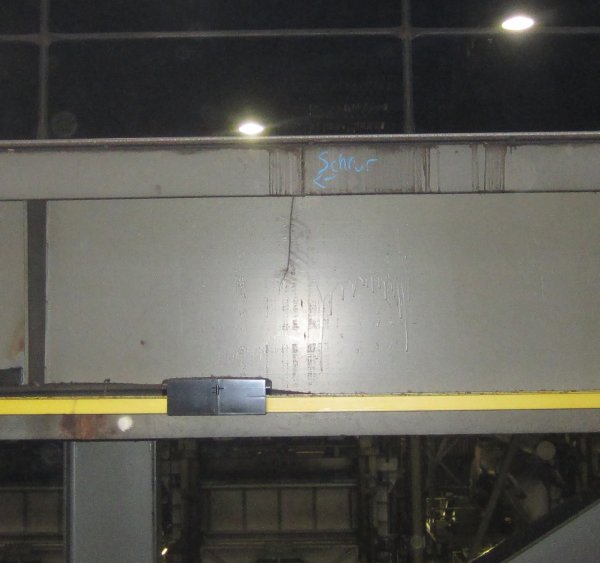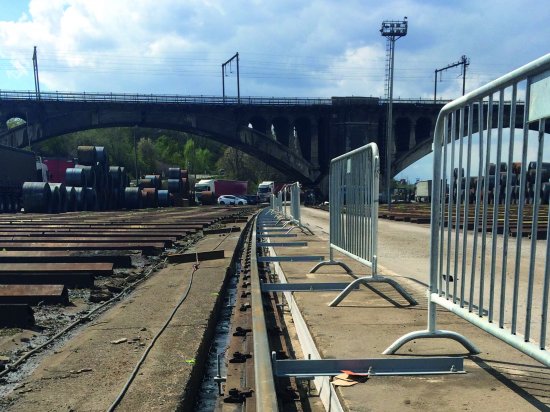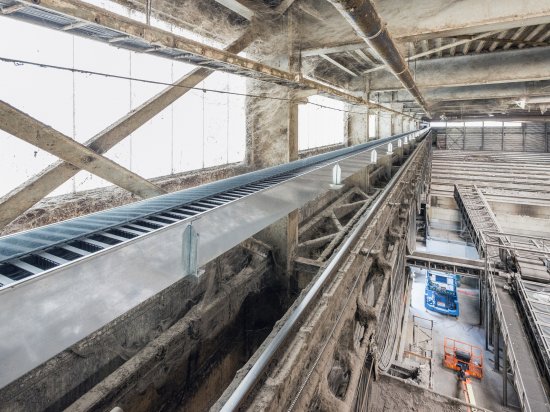Can we be confident that existing industrial steel structures are safe? A problem that occurred last year with a crane runway beam at a non-ferrous metals plant seemed to be reason for further investigation. Analysis revealed that the beams had been overloaded for decades and needed to be replaced, but some engineering ingenuity was needed to design replacements that would fit the available space.
Engineering ingenuity making things work
Last year, TCS was asked to examine a crack in a welded beam from a 165-metre crane runway at a non-ferrous metals production plant. The crack initiated at the junction of two L-shaped flanges, indicating a possible welding issue. A root cause analysis was carried out. “We recalculated the entire runway beam against the actual operating circumstances,” says TCS engineer Peter Neven. “Both static and fatigue calculations were made. The outcome was quite discomforting. We found out that the beams had been systematically overloaded for more than 40 years.”
End of life was reached
The calculations demonstrated that the beam dimensions were insufficient to withstand the crane loads. “Not only that, the welding was of insufficient quality with surface irregularities that had led to increased stress levels,” says Neven. “We came to the conclusion that the beams had reached end of life. Although we could reduce stress and strain levels by reinforcing the beams, it was clear that this would not eliminate the cumulated fatigue effects. Cracks would continue to emerge, so we strongly advised that all the beams of the 165-metre runway should simply be replaced.”
The new beams needed to be higher but still had to be a perfect fit for the limited space available at the bearing points
Complex nodes
Replacement wasn’t that simple either. Peter Neven: “The new beams needed to be higher to keep stresses and strains down. But they still had to be a perfect fit for the available space, which was obviously limited. So, we devised a special beam design with reduced height at the bearing points, and we also redesigned the two expansion joints to make them fatigue-proof. The design meant we had to develop 3D-models of the complex nodes and calculate them using finite element software. It’s engineering ingenuity making things work!”
Specifications:
- Design according to Eurocode EN-1991-3, EN-1993-6 and EN-1993-1-9 Classification S6
- Existing 15-metre HEA-900 + L150/150/15 + L120/120/12 crane runway beams replaced by HL-1100R + L100/100/15 beams
- Dimensioned for two 11-tonnes 28.6-metre coil manipulator cranes




